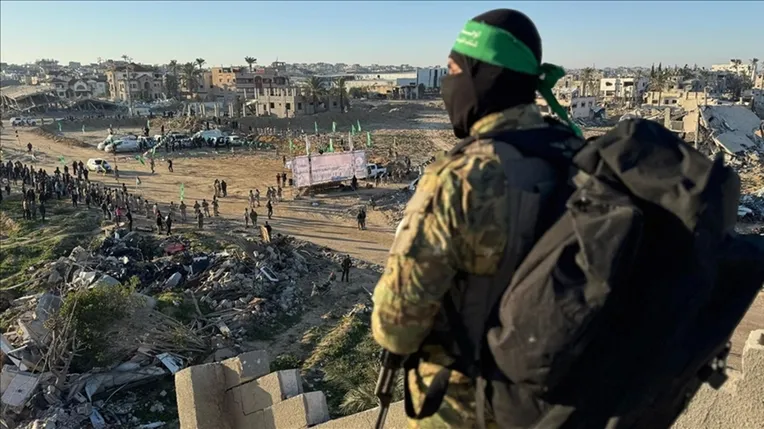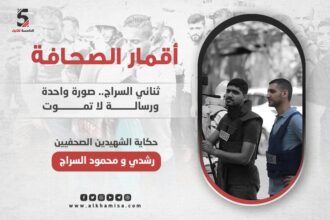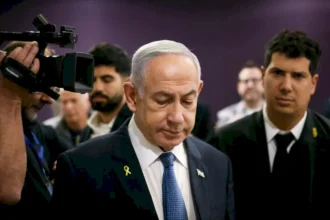Israel fears Hamas could benefit from deployment of multinational force in Gaza
Al-Khamisa News Network - Gaza

The ceasefire agreement in the Gaza Strip contains many ambiguous provisions, not only for Palestinians but also for Israelis, including the deployment of a multinational force in the territory. Although it appears promising, it could turn into a “dangerous trap” for the occupation, especially with regard to promises to disarm Hamas.
Israeli expert on Hamas Ayal Ofer said the precise version of Tony Blair’s day‑after plan for Gaza includes creating a new entity called GITA (the Gaza Interim Transitional Authority). Its tasks would include providing stability in Gaza during its reconstruction period. It would not replace the local police but would assist and coordinate with them; its role would be to protect infrastructure construction sites, humanitarian corridors and public locations, provide services and rehabilitation for Palestinians, as well as combat “terrorism” and prevent smuggling.
Ofer wrote in an article published by Channel 12 and translated by Arabi21 that a European force would be stationed at the Rafah crossing, which would be run by 150 to 200 presidential guards loyal to Abu Mazen, and be called EUBAM, short for the European Union Border Assistance Mission. It was supposed to stop smuggling at the crossing but fled in June/July 2007 when Hamas took over the Strip. Most of its personnel are Spaniards, French and Italians; they live in air‑conditioned offices in Tel Aviv, draw salaries, and are finally being allowed to return to the crossing.
He said the international force’s three main tasks would be to oversee the so‑called “disarming of the Strip” — that is, the handing over of heavy weapons capable of killing five or more people. The number of heavy rockets remaining in Hamas hands is unknown, but they are expected to be forced to hand them over. The more important question is the disarmament of Hamas itself, meaning its personal weapons: it still possesses thousands of assault rifles and RPG launchers, including the Gaza‑produced Yassin 105 — because President Trump’s explicit demand is the complete disarmament of the movement.
Ofer noted that many have speculated the movement will not agree to this step, because it could find itself weakened in battles with its domestic rivals in Gaza. Others believe it is interested in a Hezbollah model, in which a “15‑member technocratic government” would run the territory’s day‑to‑day affairs above it. Hamas never aspired to be responsible for fixing the sewage network in Shujaiya or installing traffic lights in Khan Younis while retaining its weapons and forming a force that would compel the technocratic government to operate under its influence and protection.
He added there is another, surprising possibility: Hamas might not choose the Hezbollah model but the Syrian model, taking a similar path to the opposition there — prepared to hand over all its weapons to the multinational force in return for a guarantee that its fighters would be allowed to reach the front line in coming years and be rearmed with powerful weapons. To understand why this unexpected possibility could theoretically occur, one must consider the multinational force’s third key role in Blair’s document: the security of Gaza’s borders.
Ofer said Hamas has already demanded in negotiations the deployment of Arab forces along Gaza’s eastern and northern borders, with the sole purpose of acting as a barrier to prevent entry into Gaza after the war ends so the movement can rebuild its ranks and military capabilities. In this way the multinational force, which would be composed largely of Islamic and Arab countries, would be a force that would compel the Israeli army to withdraw from almost all areas of the Strip and be deployed primarily in a manner that prevents it from resuming operations in the territory.
He explained that Egypt has requested that the mandate of this force be defined by a binding UN Security Council resolution, which would significantly limit Israel’s ability to operate inside Gaza, including air strikes. That would require a coordination mechanism with this force, reducing the army’s operational capacity there, and would lead to the integration of Gaza with the Palestinian Authority through its security services — the presidential guard and five brigades trained by U.S. General Dayton and his successor General Shapland — which would enter Gaza with the multinational force or a few months afterwards.
Ofer said Hamas always thinks long term. The return of the Authority to Gaza serves it in the short term because it would allow tens of billions to flow in for reconstruction — funds that would largely be paid as wages to Gaza residents participating in the rebuilding effort, from which Hamas would know how to collect a tithe to meet its needs. Reunification of Gaza with the Authority would also allow the movement, in the long term, to integrate into it and run again in elections as it did in 2006.






